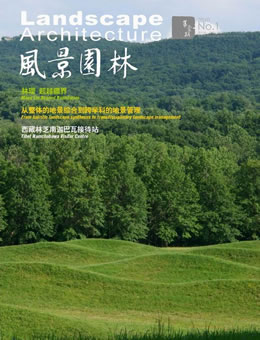撰文(比利时)马克·安托罗普
Text by Marc ANTROP (Belgium)
翻译 袁琳
Translation by YUAN Lin
关键词:风景园林;地景科学;地景生态学;空间规划;整体性;可持续性
Key words: Landscape Archi tecture; Landscape Science; Landscape Ecology; Spatial Planning; Holism; Sustainability
摘要:“地景”一词的内涵是很丰富的,且这个概念本身即蕴含着一种固有的整体观。早在文艺复兴时期,欧洲就已经产生了若干种相异的安排和布置地景的方式,不同的方式运用着不同的观念和方法。我们可以将其划分为三类,第一是自然科学,其中地景生态学起着主导作用;第二是人文科学,其中多运用历史地理、历史生态学、人文主义和符号学等手法的途径;第三是应用科学,主要是指地景设计、建筑设计与规划领域。每一分类都有助于人们深入理解地景。本文对不同类别的地景研究进行比较,但直到目前它们也还没有形成共同的观念、相同的目标和统一的描述语言,至于如何在“跨学科”的地景科学的框架下实现具有创造力的综合创新也就更无法明确。但必须明确的是,对于地景,无论是管理还是规划,我们面对的都是一块相同的土地,是面对同一对象来解决各种各样的问题。那么,这个过程就必须采取综合的方法,就不可避免地要进行跨学科的合作。
Abstract:The concept of “landscape” has multiple meaning and is intrinsically holistic. Since the Renaissance period different ways of dealing with the landscape have developed, each with its own perspective, concepts and methods. Three groups can be recognized: the natural sciences (where landscape ecology has a leading role), the human sciences (with historical geography and historical ecology, but also the humanistic and semiotic approach to landscape),and the applied sciences (with landscape design and architecture and planning). Each contributed to a new and deeper understanding of the landscape. These different trajectories of landscape research are compared. Common concepts, goals and language are not evident and it is not obvious how to make a new synthesis under the umbrella of a transdisciplinary landscape science. However, when it comes to management and planning all are dealing with the same land; a synthesis is needed and transdisciplinary cooperation is unavoidable.

地景学的谱系
 《风景园林》2010第1期导读
《风景园林》2010第1期导读
Leave a Reply